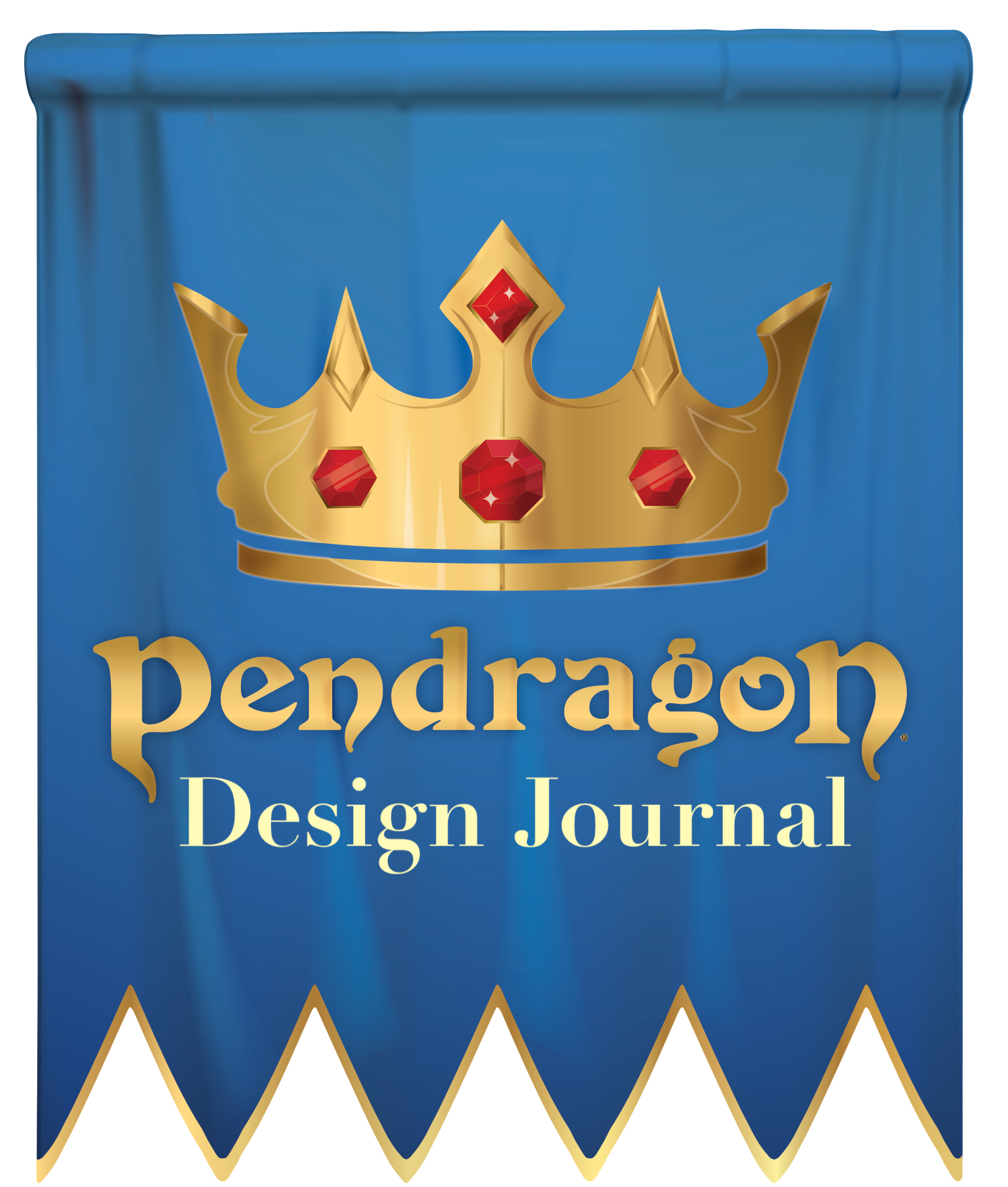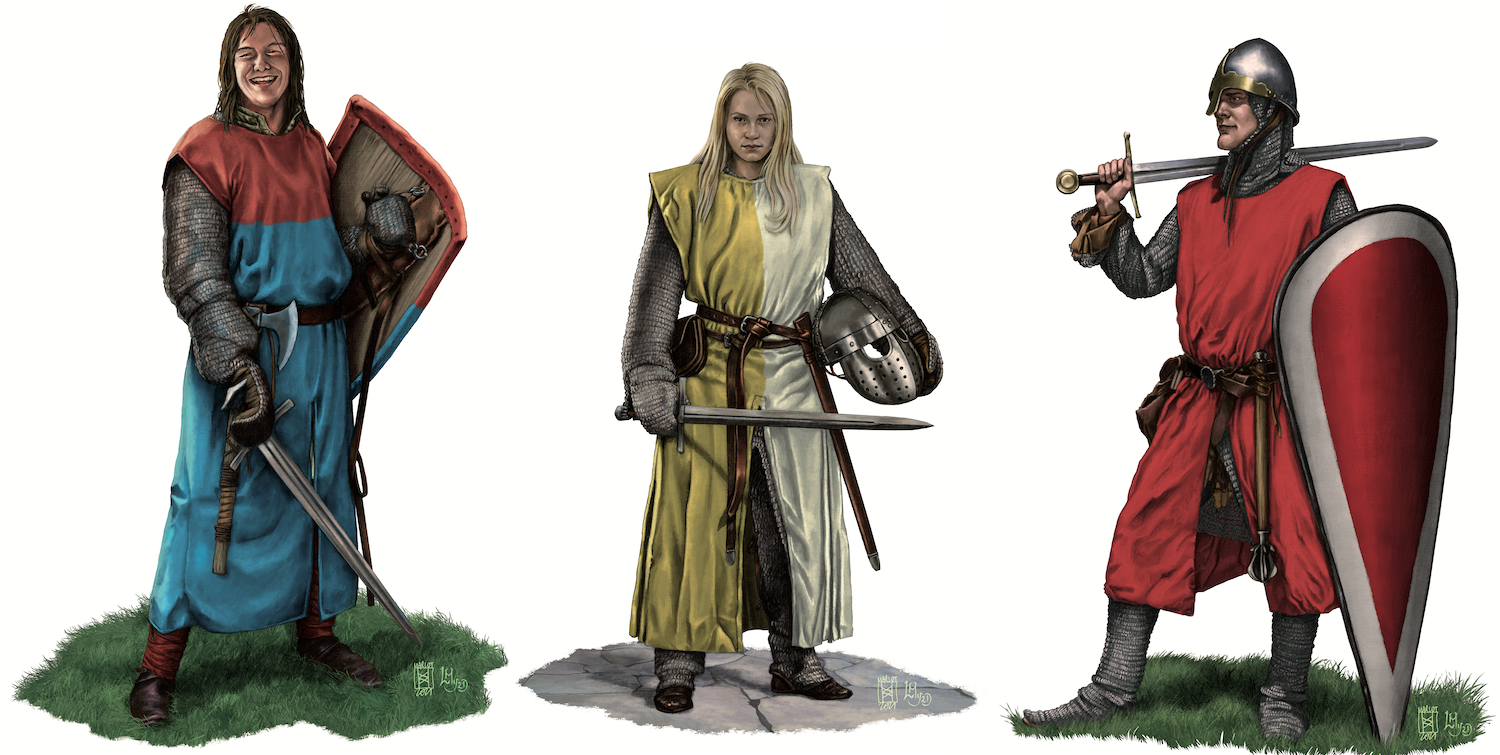Pendragon Design Journal #3: A Modular Approach
Posted by Michael O'Brien on 26th Oct 2021

By David Larkins, Pendragon line editor.
A new edition of the Pendragon RPG is coming! The intention of this series of design journals by Pendragon line editor David Larkins is to trace the path of development, starting in the early 1980s and culminating with the forthcoming new edition of the Pendragon RPG, which will be first to be wholly published by Chaosium in a quarter-century.
- Pendragon Design Journal #1: Where It All Began
- Pendragon Design Journal #2: Bringing the Light

As hinted at in last month’s Pendragon Design Journal, this time I’m going to talk a bit about one of the key concepts behind the new edition: accessibility through modularity.
Full disclosure: I started my personal journey with the game with 4th edition, a massive tome crammed full of character options, setting detail, rules for magic, and much more. As excited as I was to begin my Pendragon journey, I initially bounced hard off that brick of a book, as it were.
Eventually, I managed to dive in and haven’t looked back, of course. When The Great Pendragon Campaign came out, I immediately started using it in my then-current game. Here, again, was a weighty tome, almost challenging the Gamemaster to attempt to run the whole thing—a monumental and, for many, intimidating task!
We’re excited about bringing Pendragon to new audiences of gamers, and we understand that although most everyone in the English-speaking world (and many beyond) have heard of King Arthur and the Round Table knights, most folk don’t know very many details about this world, much less how to approach gaming within it. Large books, like those I just mentioned, make the game a harder sell than it should be.
That is why, for the new edition, we’re presenting Pendragon in a much more approachable format by breaking it down into leaner, more accessible books as much as possible.
The 6th edition Core rulebook will be a complete role-playing game, of course, presenting rules for character creation, combat, Traits and Passions, the Winter Phase, and enough information about the setting that any group could run Pendragon campaigns using nothing but this volume. But it is also intentionally easy to pick up and learn, accessible to newcomers and intended for use as straightforward table reference during a session.
The companion Gamemaster’s book goes into much greater detail, both in terms of the setting during the Boy King Period—the nominal starting Period for 6th edition—but also things like tournaments, feasts, hunting and falconry, big battles, diplomacy…and that’s not even counting the chapters presenting statistics and details on famous knights and ladies of Arthur’s realm and the many foul beasties that lurk in darkened woods and on lonely moors! With this book and the Core Rules, the enterprising Gamemaster has everything they need to craft their own Arthurian adventures for years to come.
Some groups want more, and the third volume of the core set presents that, with rules for estate management and castle-building (as well as sieges), more detailed rules for tracking your characters’ extended families and entourages, and various ranks and titles to one day attain. This is the book for the would-be barons and warlords in the group, as well as those who enjoy a bit of world-building in their game.
Whether buying just the Core Rules, or two volumes, or all three, you are guaranteed a rich Pendragon game experience.
— ABOVE: some of the pregen characters from the Pendragon Starter Set, currently in development. Art by Mathilde Marlot and Laurent Miny.
